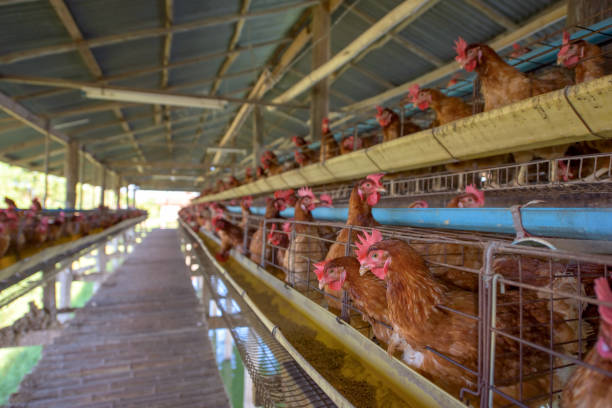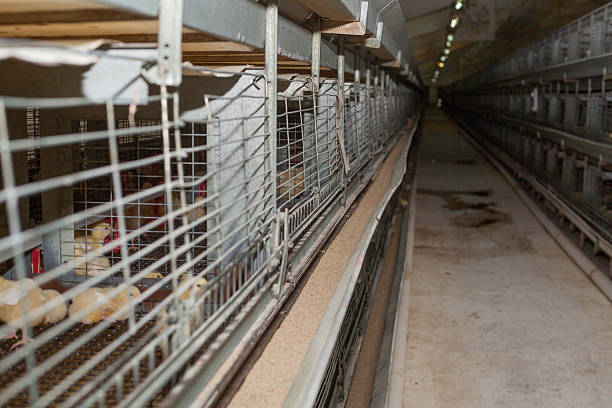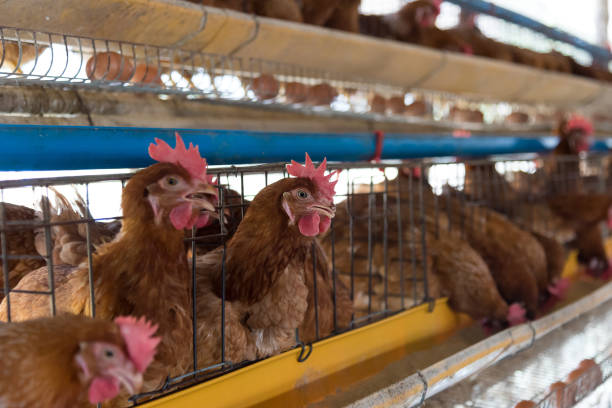Broiler Battery Cage Solutions in the Philippines: What to Look For
Broiler Battery Cage Solutions in the Philippines: What to Look For
The Philippines, with its booming poultry industry, is constantly searching for efficient and effective farming solutions. Among these, broiler battery cages stand out as a popular choice for many poultry farmers. But with so many options available, how do you ensure you’re making the right choice? This comprehensive guide will walk you through everything you need to consider when selecting broiler battery cage solutions in the Philippines.
Understanding Broiler Battery Cages: A Quick Overview
Before diving into the specifics, let’s get a clear understanding of what broiler battery cages are. These are housing systems designed to raise broiler chickens (chickens specifically bred for meat production) in a confined, multi-tiered structure. Each cage houses multiple broilers, and the entire system is designed to maximize space utilization and improve efficiency.
Why Choose Broiler Battery Cages?
Filipino poultry farmers have increasingly embraced broiler battery cages due to several compelling advantages:
Increased Space Utilization: This is perhaps the most significant benefit. Battery cages allow you to house more birds in the same amount of space compared to traditional floor systems. This is especially crucial in land-scarce areas.
Improved Disease Control: By separating the birds from their manure and limiting contact with other chickens, battery cages minimize the spread of diseases. The controlled environment also makes it easier to monitor and manage the flock’s health.
Enhanced Management Efficiency: Battery cages streamline various farm operations, including feeding, watering, and waste removal. Automation can be easily integrated into these systems, further reducing labor costs and improving efficiency.
Better Feed Conversion Ratio (FCR): The confined environment of battery cages reduces the birds’ activity, resulting in higher feed conversion ratios. This means that the chickens convert feed into meat more efficiently, leading to lower feed costs and higher profits.
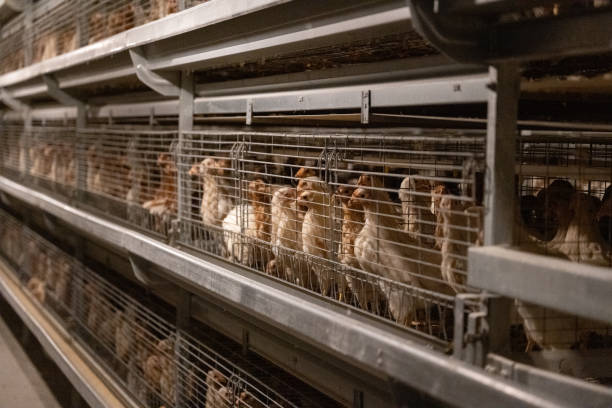
Reduced Mortality Rates: The controlled environment and enhanced monitoring capabilities contribute to lower mortality rates among broiler chickens. This is a significant factor in boosting overall profitability.
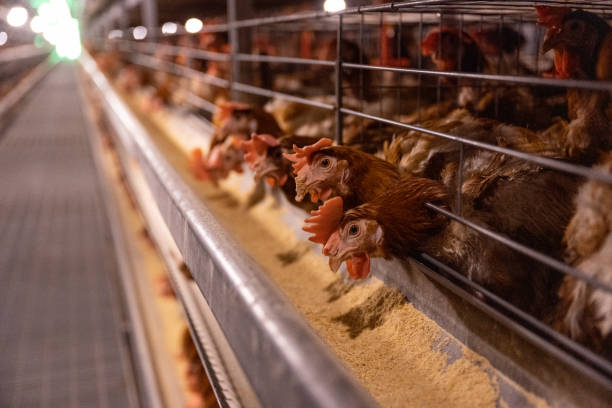
Key Considerations When Choosing Broiler Battery Cages in the Philippines
Now that we understand the benefits, let’s delve into the critical factors you should consider when selecting broiler battery cage solutions in the Philippines:
Cage Material and Construction:
Durability is Key: The cages should be constructed from high-quality, durable materials that can withstand the harsh Philippine climate. Look for galvanized steel, which is resistant to corrosion and rust.
Wire Mesh Quality: The wire mesh used in the cages should be strong and properly spaced to prevent injuries to the birds. Consider the gauge (thickness) of the wire – thicker wire is generally more durable.
Cage Dimensions: The size of the cages should be appropriate for the breed of broiler you’re raising and the stocking density you plan to implement. Overcrowding can lead to stress, disease, and reduced growth rates.
Ventilation Systems
Importance of Airflow: Adequate ventilation is crucial for maintaining a healthy environment within the broiler house. Poor ventilation can lead to the buildup of ammonia (from chicken manure), which can cause respiratory problems and reduce the birds’ productivity.
Natural vs. Mechanical Ventilation: Decide whether natural or mechanical ventilation is more suitable for your farm. Natural ventilation relies on natural airflow, while mechanical ventilation uses fans to circulate air. In the Philippines’ hot and humid climate, mechanical ventilation is often necessary to ensure adequate airflow.
Fan Capacity and Placement: If you opt for mechanical ventilation, ensure that the fans are properly sized for the broiler house and strategically placed to maximize airflow throughout the cages.
Feeding and Watering Systems
Automated Systems: Consider automated feeding and watering systems to reduce labor costs and ensure that the birds have consistent access to feed and water.
Nipple Drinkers vs. Trough Watering: Nipple drinkers are generally preferred over trough watering systems because they are more hygienic and reduce water wastage.
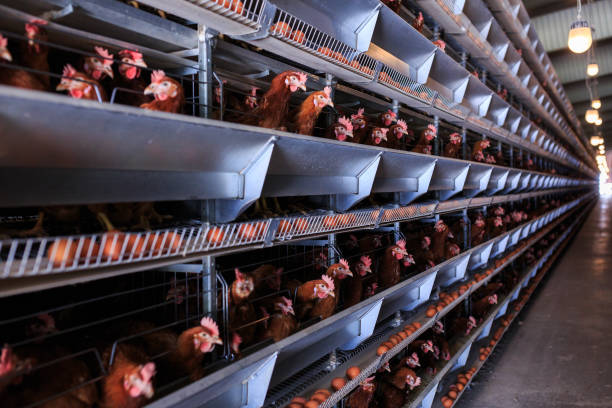
Feed Distribution: Ensure that the feeding system distributes feed evenly throughout the cages to prevent competition and ensure that all birds have access to feed.
Manure Removal Systems
Importance of Manure Management: Proper manure removal is essential for maintaining a clean and hygienic environment within the broiler house. Accumulated manure can lead to the buildup of ammonia and other harmful gases, as well as attracting pests.
Manual vs. Automatic Manure Removal: Manual manure removal is labor-intensive, while automatic systems offer greater efficiency. Options for automated systems include scraper systems, belt systems, and flushing systems.
Waste Disposal: Consider how you will dispose of the manure. Options include composting, using it as fertilizer, or selling it to other farmers.
Climate Control
Temperature Regulation: Broiler chickens are sensitive to temperature fluctuations. In the Philippines’ tropical climate, it’s important to implement measures to regulate the temperature within the broiler house, especially during the hot season.
Cooling Systems: Consider using cooling systems such as evaporative coolers or fogging systems to lower the temperature within the broiler house.
Insulation: Insulating the roof and walls of the broiler house can help to reduce heat transfer and maintain a more stable temperature.
Biosecurity Measures
Disease Prevention: Biosecurity measures are essential for preventing the introduction and spread of diseases within the broiler house.
Foot Baths and Sanitation: Implement foot baths at the entrance to the broiler house to disinfect shoes and prevent the introduction of pathogens. Regularly clean and sanitize the cages and other equipment.
Rodent and Pest Control: Implement a rodent and pest control program to prevent these animals from contaminating the feed and spreading diseases.
Automation and Technology
Benefits of Automation: Automation can significantly improve the efficiency of broiler production.
Automated Systems: Consider automating tasks such as feeding, watering, manure removal, and climate control.
Monitoring Systems: Implement monitoring systems to track key performance indicators such as temperature, humidity, feed consumption, and water consumption. This data can help you to identify potential problems early on and take corrective action.
Supplier Reputation and Support
Choosing a Reliable Supplier: Select a reputable supplier with a proven track record of providing high-quality broiler battery cage solutions.
Warranty and After-Sales Service: Ensure that the supplier offers a warranty on their products and provides after-sales service, including installation, training, and technical support.
Local Presence: Consider choosing a supplier with a local presence in the Philippines. This will make it easier to get assistance and spare parts when needed.
Regulations and Permitting
Compliance with Regulations: Ensure that your broiler farming operation complies with all relevant regulations and permitting requirements in the Philippines.
Environmental Regulations: Be aware of environmental regulations related to waste disposal and air emissions.
Local Government Requirements: Check with your local government to determine any specific requirements for broiler farming in your area.
Cost and Return on Investment (ROI)
Initial Investment: Consider the initial investment required for the broiler battery cage system, including the cost of the cages, ventilation, feeding and watering systems, manure removal, and other equipment.
Operating Costs: Estimate the ongoing operating costs, including feed, water, electricity, labor, and maintenance.
Potential Revenue: Project the potential revenue from broiler sales, taking into account factors such as market prices and growth rates.
ROI Calculation: Calculate the return on investment (ROI) to determine the profitability of the broiler farming operation.
Tips for Maintaining Your Broiler Battery Cage System
Once you’ve selected and installed your broiler battery cage system, it’s essential to maintain it properly to ensure its longevity and optimal performance:
Regular Cleaning: Clean the cages regularly to prevent the buildup of manure and other debris.
Equipment Maintenance: Inspect and maintain all equipment, including ventilation fans, feeding and watering systems, and manure removal systems, on a regular basis.
Monitor Bird Health: Regularly monitor the birds for signs of illness or injury.
Record Keeping: Keep accurate records of feed consumption, water consumption, mortality rates, and other key performance indicators.
Training: Provide training to your staff on proper cage management practices.
The Future of Broiler Battery Cages in the Philippines
The broiler industry in the Philippines is expected to continue to grow in the coming years. Broiler battery cages will likely remain a popular choice for many farmers due to their efficiency and cost-effectiveness. However, there is also growing pressure to improve animal welfare standards.
Animal Welfare Considerations: Some consumers and advocacy groups are concerned about the welfare of broiler chickens raised in battery cages.
Enriched Cages: Enriched cages, which provide more space and enrichments such as perches and dust baths, are becoming increasingly popular.
Sustainable Practices: Filipino broiler farmers are increasingly adopting more sustainable farming practices to reduce their environmental impact and improve animal welfare.
Conclusion
Choosing the right broiler battery cage solutions in the Philippines requires careful consideration of various factors, including cage material, ventilation, feeding and watering systems, manure removal, climate control, biosecurity, automation, supplier reputation, regulations, and cost. By carefully evaluating these factors, you can select a system that meets your specific needs and helps you to achieve success in the broiler industry. As the industry evolves, staying informed about best practices, animal welfare standards, and sustainable technologies will be crucial for long-term success. Remember to prioritize the health and well-being of your birds, and to adapt your practices as new technologies and regulations emerge. With careful planning and management, broiler battery cages can be a valuable tool for Filipino poultry farmers.



